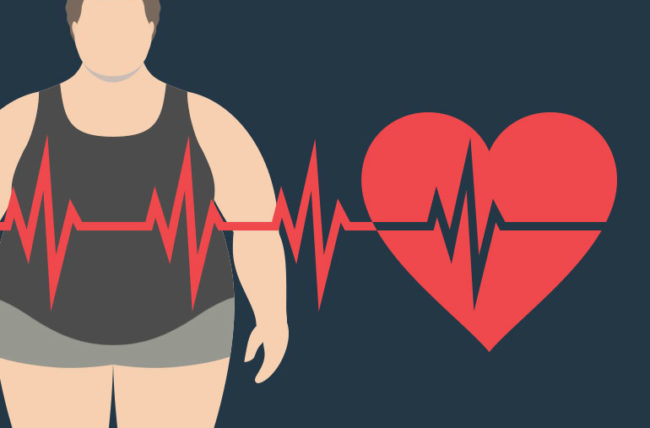Transform Your Life with a Simple Shift: The Hidden Power of Proper Posture

Shocking as it may sound, recent studies reveal that nearly 80% of the world’s population will experience neck or back pain at some point in their lives, with poor posture being the primary culprit. Even more alarming is the rise of “text neck”, a modern malady born out of our constant bending over smartphones and tablets. According to a study published in the National Library of Medicine, every inch your head tilts forward from its neutral position adds an extra 10 pounds of pressure on your spine. This means that a mere 15-degree tilt can equate to 27 pounds of force, while a 60-degree tilt—common when texting—can put up to 60 pounds of pressure on your cervical spine. Imagine carrying the weight of a small child around your neck all day, every day!
It is easy to overlook the significance of proper posture amidst our daily routines. However, the consequence of poor posture extends far beyond discomfort. Chronic poor posture can lead to serious health issues, such as persistent back and neck pain, respiratory problems, and even diminished mental health. In an age where technology is an integral part of our lives, it is crucial that we understand the impact of our daily habits on our bodies. From the office desk to the living room couch, and yes, even in bed, how we position ourselves is more important than ever. With the omnipresence of smartphones, laptops, and long hours spent seated at desks, our postural habits are under siege like never before.
The Anatomy of a Good Posture
Whether we are standing still or moving around, the way we hold our bodies—our posture—plays a significant role in our overall health. There are two key types of posture; static and dynamic. Each impacts our musculoskeletal system in unique ways. Static posture refers to how we hold ourselves when we are not moving, that is, while sitting, standing, or lying down. It involves maintaining proper alignment and balance without the influence of motion. On the other hand, dynamic posture refers to how we position ourselves while in motion, such as walking, running, or lifting objects.
Here are some of the key features of good posture in different positions;
Standing
The way you stand is the foundation of your presence. It’s more than just a position; it’s a statement. When you stand with your shoulders back, chest open, and head held high, you exude confidence and readiness. This posture is not just for show—it promotes better alignment of your spine, reduces the risk of back pain, and enhances your breathing. Ignoring proper standing posture can lead to muscle fatigue, joint strain, and long-term complications like scoliosis or kyphosis. Pay attention to the following while standing:
- Distribute Weight Evenly: Stand with your feet shoulder-width apart and your weight evenly distributed on both feet. Avoid leaning on one leg for prolonged periods.
- Head: Imagine a string pulling the crown of your head towards the sky, keeping your head level and your ears aligned with your shoulders.
- Shoulders: Let your shoulders relax and fall back naturally. Avoid the temptation to hunch forward.
- Spine: Maintain the natural curve of your spine. Avoid exaggerated arches or slumping.
- Hips: Keep your hips level and engage your core muscles to support your spine.
- Relax Your Knees: Avoid locking your knees; keep them slightly bent to reduce pressure on your joints.

Sitting
Many of us are tethered to desks for hours on end, so sitting properly can be a game-changer for our bodies’ well-being. The act of sitting, often overlooked, has a profound impact on your spinal health and overall comfort. A well-aligned posture while sitting can prevent the dreaded desk-job hunch and reduce fatigue.
To sit properly:
- Choose the right chair: Choose a chair that supports your spinal curves. Make sure that your feet rest flat on the floor, and your knees are at a 90-degree angle.
- Back Support: Use a chair with good lumbar support, or place a cushion at the base of your spine.
- Screen Level: Ensure your computer screen is at eye level to avoid craning your neck.
- Arm Position: Keep your forearms parallel to the ground, with your elbows close to your body.
- Take Breaks: Stand up and stretch every 30 minutes to prevent stiffness and maintain circulation.

Walking
Walking is an everyday activity that we often take for granted, but it offers a perfect opportunity to practice good posture. Walking with proper alignment not only makes you look poised and confident but also ensures that your muscles and joints work harmoniously.
While walking you should:
- Stand Tall: Keep your head up looking straight ahead, shoulders back, and chest out.
- Shoulders: Relax your shoulders and let your arms swing naturally by your sides to help with balance and momentum.
- Spine: Engage your core muscles to support and maintain the natural curve of your spine.
- Stride: Walk with your feet pointing straight ahead. Take even, balanced steps, land on your heel and roll forward to push off your toes.

Sleeping
Not even while sleeping should you lose sight of your posture! Correct sleeping posture can be the ultimate reset button for your body, allowing it to recover and rejuvenate. Poor sleeping positions can lead to many health issues, from back pain to restless nights. By paying attention to how you sleep, you set yourself up for a day of optimal posture.
Here’s how to maintain correct posture while asleep:
- Mattress and Pillow: Choose a mattress and pillow that support your natural spinal alignment. A medium-firm mattress and pillow will help maintain the natural alignment of your spine.
- Back Sleepers: If you sleep on your back, use a pillow that supports the natural curve of your neck and place another pillow under your knees.
- Side Sleepers: Use a pillow that keeps your head aligned with your spine and place another pillow between your knees.
- Stomach Sleepers: It’s best to avoid sleeping on your tummy, but if you do, use a thin pillow for your head and one under your pelvis or no pillow at all.

Running
As you run to that that class or ward round you’re already late for, maintaining an upright posture with a slight forward lean from the ankles is crucial. Your head should remain level, and your gaze should be forward.
You should land your feet on the toes first, not heel. If you jog or run habitually, investing in a good pair of running shoes will return tremendous rewards.

Lifting
When lifting objects, bend at your hips and knees rather than your back. Keep the object close to your body and use your legs to lift, not your back.

Assessing Your Posture
How do you know if your posture needs tweaking? Start with a simple self-assessment: observe yourself in various positions—standing, sitting, and lying down. Are your shoulders rounded forward? Is your lower back overly arched or flattened? These subtle cues can indicate underlying postural issues that, if left unchecked, can lead to significant health challenges. For a more thorough evaluation, consulting a physical therapist can provide personalized insights and corrective exercises tailored to your specific needs.
Tips for maintaining good posture
Always maintaining the right posture can seem overwhelming, so here are some tips to help you everyday:
- Daily Habits: Fixing your posture is not a one-day job, so consistent habits will take you a long way. Incorporate regular breaks into your day to stretch and move. Simple exercises like shoulder rolls, neck stretches, and spine twists can alleviate tension and reinforce proper alignment.
- Ergonomics: Whether at your desk or lounging on the bed, ensure your environment supports good posture. Ensure that your feet rest flat on the floor, and position your computer screen at eye level to avoid straining your neck.
- Exercise and Strengthening: Strengthening core muscles through exercises like planks and bridges can provide the foundation for better posture. Routines such as yoga or pilates emphasize flexibility and alignment, which enhances overall posture awareness.
- Mindfulness and Awareness: Remain mindful of your posture throughout the day. Practice techniques such as the Alexander Technique or Feldenkrais Method, which promote body awareness and efficient movement patterns.
Bad posture can lead to a cascade of negative consequences. Chronic slouching or incorrect alignment can cause persistent back, neck, and shoulder pain, headaches, and fatigue. Over time, poor posture can contribute to more serious health issues such as spinal deformities, compromised lung function, and even diminished mental health due to the discomfort and pain associated with musculoskeletal strain. Thus, cultivating and maintaining good posture is essential for long-term physical well-being and quality of life.
So, as you embark on this journey toward better posture, remember: every small adjustment counts. Whether you’re seated at your desk or striding confidently down the street, listen to your body. Prioritize its alignment and let each movement reflect your commitment to your well-being. Your spine, the pillar of your body, will thank you for it—and so will every aspect of your health and vitality. Embrace correct posture and let it guide you to a more balanced, energized, and harmonious life!
Sodiq Abdulsalam
References
National Library of Medicine (2024). MedlinePlus. Medlineplus.gov. Available at: https://medlineplus.gov/
Cleveland Clinic (2024). Available at: https://my.clevelandclinic.org/



